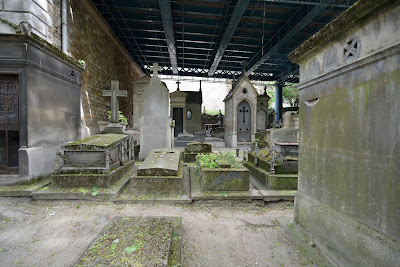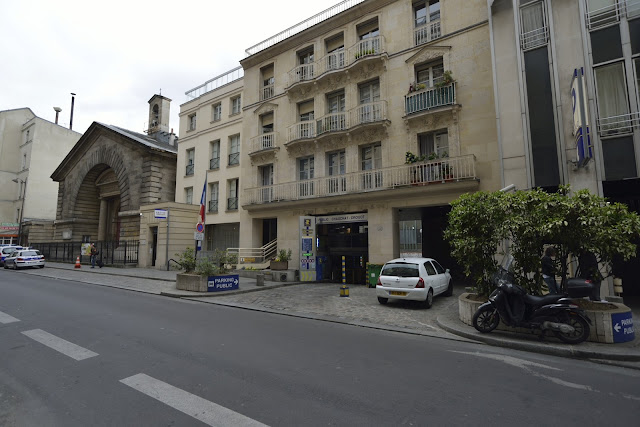Canal Saint Martin / Parc de la Villette
Parks are special places in Paris. Whether it’s a small
local park carved out of a small neighborhood or a signature destination such
as the Jardin du Luxembourg on the Left Bank, they are thoughtfully planned and
beautifully maintained. Regardless of the weather or how crowded they are on a
given day, they feel at once very personal and private, while at the same time
a communal celebration of the opportunity to be outdoors in a beautiful
setting.
Located just inside the extreme northeast corner of the Boulevard Periphérique (the main highway that surrounds the city of Paris proper) in the 19th Arrondissement is the Parc de la Villette. It’s extremely new by Parisian standards (completed in 1991). It was built on land reclaimed from the slaughterhouses of Villette. It’s also the home to the Cité des Sciences et de l’industrie, a huge interactive science museum and planetarium.
We approached the park via an area known as the Canal Saint
Martin and the Bassin de la Villette, romantic scenic destinations in their own
right. Though it was built between 1822 and 1825 by Napoleon to provide more
drinking water to the city of Paris, today it’s a tree-lined stroll along the
various locks and metal foot bridges that traverse it. Finally reaching the
Place de la Bastille, the canal flows into the Seine and terminates at Port de
L’Arsenal, a pleasure boat marina, converted from what used to be part of the
moat around the Bastille prison and a commercial port to offload wood for the
furniture trade.
The basin is a perfect setting to rent a boat to get both exercise and take in the scenery. If you’re feeling less adventuresome there are canal cruise boats that ply the trench.
There are of course those canal barges that are more akin to house boats (notice the potted plants atop the lower cabin).
The walkways are filled with
entertainment from bars and restaurants to a multiplex movie theater. There’s lots
of pick up bocce ball, play dates in the children’s playgrounds and lunching
along the walkways among friends.
At the Rue de Crimée crossing, the automotive bridge lifts vertically about 20 feet on a cable and pulley system to allow barges to pass. The pedestrian bridge that parallels it was built high enough to let the boats pass.
Bicycles are available for rent, including tandem bikes,
just outside the park. There are dedicated bike lanes both inside the park and
along the basin that are smooth pavement as opposed to the cobble stone
walkways – a lot more comfortable!
The park itself is sectioned off into various areas ranging
from carnival-like attractions to simple grassy meadows, from tennis and
basketball courts to the museum of science and industry. There’s an elevated walkway
that parallels the canal in addition to the water level path to provide a
different perspective.
Unfortunately this wonderful city / park environment has not
escaped the ravages of graffiti in some areas – even if the colors are quite
impressive! But planners have also done an impressive job converting what
appear to be remnants of the slaughterhouses into modern offices.
































































